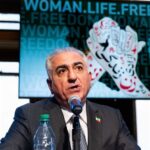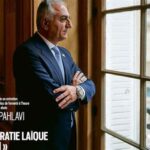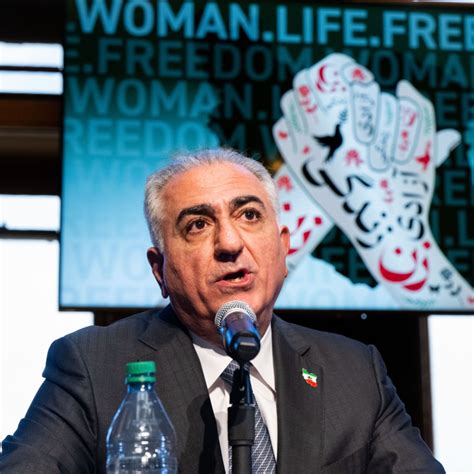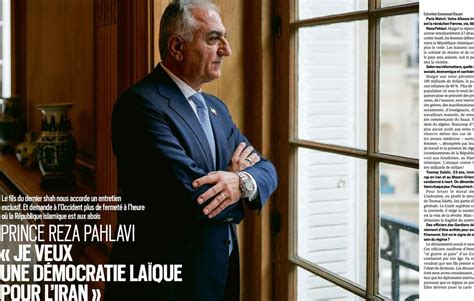
Nudists marched through the heart of Mexico City on Saturday, advocating for body positivity and acceptance in a demonstration that organizers hoped would challenge societal norms and promote a more inclusive view of the human form. Hundreds participated in the event, celebrating freedom and self-acceptance while aiming to normalize nudity in a country often characterized by conservative values.
The march, organized by various nudist groups and body positivity activists, commenced at the iconic Angel of Independence monument and proceeded along Paseo de la Reforma, one of the city’s main avenues. Participants, both local residents and international visitors, shed their clothes to varying degrees, embracing the opportunity to express themselves and challenge conventional standards of beauty.
“We are here to promote respect, tolerance, and acceptance of all body types,” stated one of the organizers, Maria Elena Rodriguez, prior to the march. “Nudity is not inherently sexual; it is a natural state of being. We want to break down the stigmas and prejudices that surround it.”
The event attracted a diverse crowd, encompassing individuals of different ages, genders, and body types. Many participants carried signs and banners with slogans such as “My Body, My Choice,” “Nudity is Natural,” and “Embrace Your Body.” The atmosphere was described as celebratory and empowering, with participants expressing a sense of liberation and solidarity.
“It’s incredibly liberating to be here, surrounded by people who accept me for who I am,” said Carlos Martinez, a participant in his late 20s. “I’ve struggled with body image issues for years, and this march is helping me to overcome those insecurities.”
The march also drew attention from onlookers, some of whom expressed curiosity and support, while others voiced disapproval or discomfort. Police were present to ensure the safety and order of the event, and no major incidents were reported.
“We understand that not everyone will agree with what we’re doing, but we hope to at least spark a conversation and challenge people to think about their own attitudes towards nudity and body image,” Rodriguez added.
The event organizers emphasized that the march was not intended to be a provocative or exhibitionist display, but rather a peaceful protest and a celebration of body positivity. They highlighted the importance of creating a society where individuals feel comfortable and confident in their own skin, regardless of their appearance.
Mexico City has a small but growing nudist community, with several designated nudist beaches and resorts located in other parts of the country. The march represented a significant step forward in raising awareness and promoting acceptance of nudism in the capital city.
The demonstration reflects a broader global movement towards body positivity and inclusivity, challenging unrealistic beauty standards and advocating for greater acceptance of diverse body types. Similar events have taken place in other cities around the world, reflecting a growing awareness of the importance of self-acceptance and body confidence.
The organizers plan to continue their advocacy efforts, including educational campaigns and community outreach programs, to further promote body positivity and acceptance in Mexico City and beyond. They hope that the march will serve as a catalyst for positive change and inspire individuals to embrace their bodies and challenge societal norms.
The march concluded peacefully, with participants expressing a sense of accomplishment and renewed commitment to their cause. The event garnered significant media attention, both locally and internationally, further amplifying its message of body positivity and acceptance. The long-term impact of the march remains to be seen, but organizers are optimistic that it will contribute to a more inclusive and accepting society.
The event also highlighted the ongoing debate surrounding public nudity and the balance between freedom of expression and societal norms. While some argue that nudity is a natural and harmless form of expression, others view it as offensive or inappropriate in public settings. The march in Mexico City served as a reminder of the diverse perspectives on this issue and the importance of respectful dialogue and understanding.
Furthermore, the march underscored the intersectionality of body positivity with other social justice issues, such as gender equality, LGBTQ+ rights, and disability rights. Many participants emphasized that body positivity is not just about accepting one’s physical appearance, but also about challenging systemic inequalities and promoting inclusivity for all individuals, regardless of their background or identity.
The demonstration also provided a platform for individuals to share their personal stories and experiences related to body image issues. Many participants spoke about the challenges they have faced in navigating societal pressures and unrealistic beauty standards, and how the body positivity movement has helped them to overcome those challenges.
The organizers of the march expressed their gratitude to the participants, volunteers, and supporters who helped make the event a success. They also acknowledged the challenges that remain in achieving full acceptance and inclusivity, but expressed their determination to continue working towards a more just and equitable society.
The event concluded with a closing ceremony featuring speeches, performances, and opportunities for participants to connect and share their experiences. The atmosphere was one of hope and optimism, with participants expressing a sense of empowerment and solidarity.
In the aftermath of the march, organizers are planning to conduct a survey to assess the impact of the event on public attitudes towards nudity and body image. They also plan to collaborate with local organizations and community groups to develop educational programs and resources that promote body positivity and acceptance.
The success of the march in Mexico City has inspired other nudist groups and body positivity activists around the world to organize similar events in their own communities. The movement towards greater acceptance and inclusivity continues to gain momentum, challenging societal norms and promoting a more compassionate and understanding world.
“This is just the beginning,” Rodriguez said. “We will continue to march, to speak out, and to advocate for a world where everyone feels comfortable and confident in their own skin.”
Expanded Context and Analysis:
The march in Mexico City wasn’t an isolated event but rather a part of a broader, global movement pushing for radical acceptance and challenging deep-seated societal constructs around body image. To understand its significance, it’s essential to consider the historical context, cultural nuances, and the evolving definitions of body positivity.
Historically, the perception of the human body has been shaped by various factors, including religious beliefs, artistic conventions, and social norms. In many cultures, nudity has been associated with shame, sin, or vulnerability, leading to strict regulations and taboos surrounding exposure. The rise of consumerism and the media has further contributed to the objectification of the body, particularly women, perpetuating unrealistic beauty standards and fueling body image anxieties.
The body positivity movement emerged as a response to these pressures, challenging the narrow and often unattainable ideals of beauty promoted by the fashion and entertainment industries. It advocates for the acceptance and celebration of all body types, regardless of size, shape, color, or ability. The movement emphasizes self-love, self-acceptance, and the recognition that beauty is subjective and diverse.
Nudism, as a practice, has its own distinct history and philosophy. While often conflated with exhibitionism or sexual deviancy, nudism is primarily about a non-sexual social practice of being nude in private and public. Nudists often describe a feeling of freedom and connection with nature when unclothed. They often state that it’s about breaking down the artificial barriers and constraints imposed by clothing and societal expectations.
The intersection of nudism and body positivity creates a powerful synergy. Nudist events and communities can provide a safe and supportive environment for individuals to embrace their bodies and challenge internalized shame or negativity. By normalizing nudity, they can help to desexualize the body and promote a more accepting and inclusive view of the human form.
In Mexico, as in many other Latin American countries, conservative social norms and religious traditions often exert a strong influence on attitudes towards nudity and sexuality. However, there is also a growing awareness of the importance of body positivity and acceptance, particularly among younger generations. The march in Mexico City represents a significant step forward in challenging these conservative norms and promoting a more open and accepting society.
The march also highlights the importance of intersectionality within the body positivity movement. While the movement initially focused on size acceptance, it has increasingly recognized the need to address other forms of body-based discrimination, including racism, ableism, and transphobia. The organizers of the march in Mexico City emphasized that body positivity is not just about accepting one’s physical appearance, but also about challenging systemic inequalities and promoting inclusivity for all individuals, regardless of their background or identity.
The success of the march can be attributed to several factors, including the organizers’ effective communication strategy, the growing awareness of body positivity issues, and the willingness of participants to challenge societal norms. The event also benefited from the support of local organizations and community groups, as well as the attention of the media.
However, the march also faced challenges, including criticism from conservative groups and individuals who viewed it as inappropriate or offensive. The organizers had to navigate these challenges carefully, emphasizing the peaceful and non-provocative nature of the event and highlighting its message of body positivity and acceptance.
The long-term impact of the march remains to be seen, but it has already generated significant discussion and debate about nudity, body image, and societal norms. The event has also inspired other nudist groups and body positivity activists to organize similar events in their own communities.
Societal Implications and Psychological Impact
The implications of such a public demonstration extend far beyond a single day’s event. They touch upon fundamental aspects of societal values, psychological well-being, and the evolving understanding of human expression.
From a societal perspective, the march challenges traditional notions of modesty and propriety. In many cultures, including those with strong religious influences, the human body is often veiled in layers of clothing and subjected to strict social norms regarding exposure. By deliberately choosing to shed these layers, participants in the march directly confront these norms and invite a re-evaluation of their validity. This can lead to a broader discussion about the role of clothing in defining identity, the regulation of public spaces, and the limits of freedom of expression.
Furthermore, the march raises questions about the commercialization and sexualization of the body. The media and advertising industries often portray unrealistic and unattainable ideals of beauty, contributing to body image anxieties and eating disorders. By presenting the human body in its natural state, the march seeks to reclaim it from these exploitative forces and promote a more authentic and accepting view.
Psychologically, the act of stripping naked in public can be incredibly empowering for individuals who have struggled with body image issues. It allows them to confront their insecurities head-on and to experience a sense of liberation and self-acceptance. The support and camaraderie of fellow participants can further enhance this experience, creating a sense of belonging and solidarity.
However, it’s also important to acknowledge that the decision to participate in such an event is not without its challenges. Individuals may face criticism, judgment, or even harassment from others. They may also struggle with their own internalized shame or discomfort. Therefore, it’s crucial for organizers to create a safe and supportive environment where participants feel respected and valued.
The long-term psychological impact of participating in a body positivity march can be significant. Individuals may develop a greater sense of self-confidence, self-acceptance, and body appreciation. They may also become more active advocates for body positivity and inclusivity in their own communities.
However, it’s important to note that the impact of such an event can vary depending on individual circumstances and experiences. Some individuals may find it transformative, while others may find it more challenging. It’s crucial to approach such events with sensitivity and respect, recognizing that each individual has their own unique journey.
Legal and Ethical Considerations
The march in Mexico City also raises important legal and ethical considerations. Public nudity laws vary widely from country to country, and even within different jurisdictions within a single country. In some places, public nudity is legal, while in others it is strictly prohibited.
Even in jurisdictions where public nudity is legal, there may be limitations or restrictions. For example, some laws may prohibit nudity that is intended to be sexually provocative or that is likely to cause offense to others.
In the case of the march in Mexico City, it appears that the organizers obtained the necessary permits and licenses from the local authorities. However, it’s possible that some participants may have been subject to legal action if their conduct was deemed to be in violation of local laws.
From an ethical perspective, the march raises questions about the balance between freedom of expression and the rights of others. While individuals have the right to express themselves, they also have a responsibility to do so in a way that does not infringe upon the rights or sensitivities of others.
In the case of the march, some individuals may have found the nudity to be offensive or disturbing. Others may have been concerned about the potential impact on children. It’s important to consider these perspectives and to engage in respectful dialogue about the ethical implications of public nudity.
The Future of Body Positivity and Nudism
The march in Mexico City is just one example of the growing momentum behind the body positivity and nudism movements. These movements are likely to continue to gain traction in the years to come, as more and more people become aware of the importance of self-acceptance and inclusivity.
Technology and social media are playing a significant role in this trend. The internet provides a platform for individuals to connect with others who share their values and to organize events and campaigns that promote body positivity and nudism.
However, challenges remain. The media and advertising industries continue to perpetuate unrealistic beauty standards, and many individuals still struggle with internalized shame and negativity.
To overcome these challenges, it’s crucial to continue to raise awareness about body positivity and nudism, to challenge harmful stereotypes and misconceptions, and to create safe and supportive environments where individuals can embrace their bodies and express themselves freely.
The march in Mexico City serves as a reminder that change is possible. By challenging societal norms and promoting a more accepting and inclusive view of the human form, we can create a world where everyone feels comfortable and confident in their own skin.
The Role of Education and Awareness
Education and awareness are critical components in fostering a society that embraces body positivity and accepts diverse forms of self-expression, including nudism. Comprehensive educational programs can dismantle harmful stereotypes, challenge unrealistic beauty standards, and promote self-acceptance from a young age.
Schools, community organizations, and public health initiatives can play a vital role in disseminating accurate information about body image, mental health, and the impact of media on self-perception. These programs can equip individuals with the tools to critically analyze media messages, resist societal pressures, and cultivate a healthy relationship with their bodies.
Furthermore, educational initiatives can address the misconceptions and stigmas surrounding nudism. By providing factual information about the history, philosophy, and social practices of nudism, these programs can help to normalize nudity and challenge the association of nudity with sexuality or deviancy.
Awareness campaigns can also target specific populations that are disproportionately affected by body image issues, such as teenagers, women, and LGBTQ+ individuals. These campaigns can provide tailored resources and support to help these groups navigate societal pressures and cultivate self-acceptance.
By investing in education and awareness, we can create a more informed and compassionate society that embraces diversity and celebrates the beauty of all bodies.
FAQ:
-
What was the purpose of the nudist march in Mexico City? The purpose of the march was to promote body positivity, self-acceptance, and to challenge societal norms surrounding nudity. Organizers aimed to break down stigmas and prejudices related to body image and advocate for a more inclusive view of the human form. According to Maria Elena Rodriguez, one of the organizers, “We are here to promote respect, tolerance, and acceptance of all body types. Nudity is not inherently sexual; it is a natural state of being. We want to break down the stigmas and prejudices that surround it.”
-
Who participated in the march? The march attracted a diverse group of participants, including local residents and international visitors of various ages, genders, and body types. Many participants were members of nudist groups and body positivity activist organizations.
-
Where did the march take place? The march commenced at the Angel of Independence monument and proceeded along Paseo de la Reforma, a major avenue in Mexico City.
-
Was the march legal and safe? Police were present to ensure the safety and order of the event. While the article doesn’t explicitly state that permits were obtained, the presence of law enforcement suggests the march was authorized. The article mentions that no major incidents were reported, indicating a safe event.
-
What was the reaction to the march? The reaction to the march was mixed. Some onlookers expressed curiosity and support, while others voiced disapproval or discomfort. The event garnered significant media attention, both locally and internationally. The organizers recognized that not everyone would agree with their actions, but hoped to spark conversation and challenge people’s attitudes towards nudity and body image.









